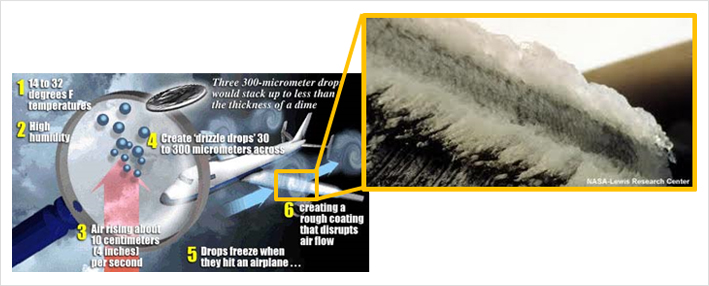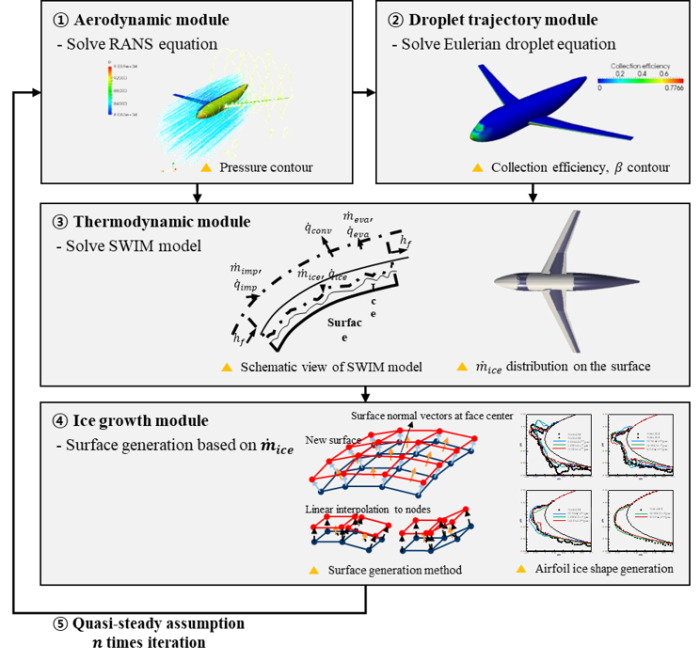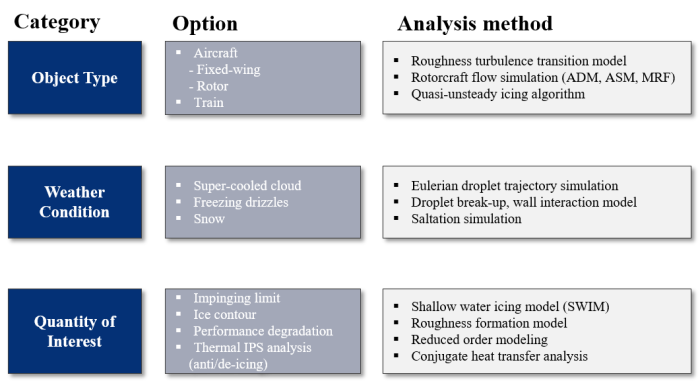Icing Simulation Code
Aircraft Icing
Aircraft icing is the phenomenon in which supercooled water vapor in the air hits an airplane surface and freezes on it. The ice accreted on the surface prevents the airplane from performing at its full capacity and threatens its operational safety. To cope with ice accretion, many airplanes are equipped with anti/de-icing devices. However, because of installation and maintenance costs as well as weight issues, the operation of these devices is limited to small portions of the surface for as little time as possible. Therefore, the device should be designed for efficiency. Implementing an efficient anti/deicing device requires estimation of the ice coverage and the heat capacity of the surface to eliminate the ice. These characteristics related to icing are available through researches into the icing behavior.

ICEPAC
Ice Contour Estimation and Performance Analysis Code (ICEPAC) is in-house icing simulation tool developed in AVDL. ICAPAC is 2nd generation icing code whose skeleton is based on OpenFOAM. ICEPAC is sufficiently validated in the wide range of icing condition including both rime/glaze condition. Also, it’s predictive capability covers special weather conditions such as supercooled large droplet (SLD) and snow saltation, or specific purpose such as HALE icing, Anti/de-icing, and rotorcraft icing.

